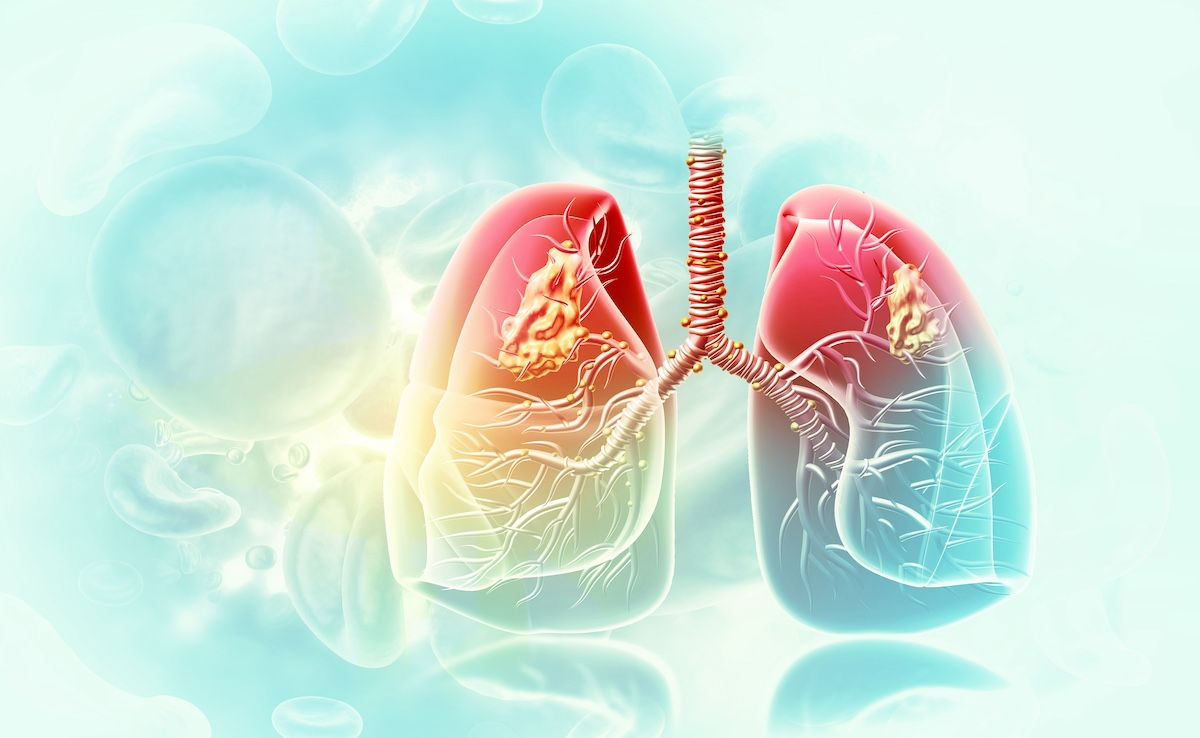Video
Overview of KRAS G12C Mutations in NSCLC
Martin Dietrich, MD, PhD, explains what KRAS G12C mutations in NSCLC are and how common they are within the NSCLC landscape.
Martin Dietrich, MD, PhD: One of the most common mutational changes in non-small cell lung cancer is the KRAS-G12C mutation, as characterized by a replacement of a glycine amino acid by cysteine leading to a constitutively active KRAS molecule within lung cancer. KRAS is by far the oldest identified oncogene and has remained inaccessible to targeting for the longest time. We now have targeting options available. One agent in the market, sotorasib, renders KRAS in its inactive form. It's challenging [to find a way of targeting this] when you have a long molecule and only 1 amino acid is different, as KRAS does not carry the typical tyrosine kinase-based ATP [adenosine triphosphate] pocket. This required a sophisticated modeling approach to get to this class of medication with an intelligent design. Now, we have this available. Fortunately for patients, KRAS is associated with very good responses to immunotherapy as well. We oftentimes see a correlation with elevated tumor mutational burden and inflammatory activity. KRAS offers an opportunity that is unique in the sense that it is accessible now by targeted therapy and by immunotherapy at the same time. In the future, it [could also be accessible] in combination, depending on further readout of pending studies. I'm hopeful this will eventually replace chemotherapy in the first-line setting for ineligible patients, and we're going to see how the efficacy data is going to look like. This is 1 in 8 patients in non-small cell lung cancer, and because of the high frequency and large number of patients it represents, it's really one of those mutations that you can't afford to miss.
As part of the diagnosis, molecular testing really complements the histological analysis. Therefore, it's important to obtain molecular testing up front prior to initiation of therapy. This is one of the most critical parts, whereas there are certain mutations that we don't want to treat up front with a broader chemotherapy or immunotherapy-based approach. This could include EGFR and ALK mutations, but it certainly extends biologically into mutations in the red pathway, for example, and interacts in others. Having these information pieces obtained after initiation of therapy typically leads to a dilemma because we really have [the best data of sequencing] when we follow standard-of-care practices. This should be done up front for every patient as a reflex paddle and be included as part of the diagnosis—not buried in the electronic medical record, but really be included in the progress notes that are written in clinic so it's readily accessible data for patients to be reviewed. The importance of this is that, in many cases, we see these mutations as helpful but not necessarily as a first-line choice. KRAS is a good example; we see roughly 40% response rate in the third- and first-line setting, but with a combination of chemotherapy and immunotherapy, [we see] roughly 60% response rate and also longer follow up for responses. In a single-agent setting, KRAS may be appropriately placed in the second line where it replaces standard cytotoxic chemotherapy approaches but not necessarily in the first-line setting. It's important to have that memory bridge built in from the get-go, to map out not only the next step but the sequence of events for patients that are happening. That's important when you have all the information on the table during the first visit. You can think about not only the first step, but step 2, step 3, and step 4 for a patient. There may be some modifications depending on the clinical circumstance, but from a molecular map, having the information as early as possible is key to provide the best care possible, minimizing adverse events and maximizing outcomes for patients.
KRAS G12C mutations constitute roughly 12% of mutations in non-squamous non-small cell lung cancer. They also present in squamous cell lung cancer with a lesser frequency, so they are an attractive target in and of itself and by far the largest subgroup of mutations we're seeing in lung cancer. When you lump together all 4 exons of alterations that we see in EGFR, they may be surpassing KRAS G12C by itself, but they roughly make up the same numbers if you compare EGFR exon 19 and KRAS G12C. It’s a common mutation if you think about 1 in 8 out of 225,000 cases a year. This is an enormous number of patients that can be considered for treatment with KRAS G12C. KRAS G12C is not the typical tyrosine kinase driver in non-small cell lung cancer; the response pattern is very different. We see lasting responses in patients, especially in those that have initial tumor shrinkage by resist criteria. We do see a pattern that is roughly similar sized as the partial and complete responders, which is a stabilization of disease. This seems to be less of a vigorous response that we see in an EGFR setting, but that doesn't mean that these responses aren't valuable for patients. For a patient, a tumor that is not growing is a success, especially as inhibitors of KRAS are specific in their adverse event profile, [and] overall very tolerable. It's important to have them ready to go by the time a patient requires them in second line, but it's certainly a better backup option because prior to the introduction of KRAS inhibitor, the standard of care alternative option would have been attacks to your base regimen, typically in combination with ramucirumab. This is an improvement in terms of tolerance compared to what we would see in a second-line setting.
This transcript has been edited for clarity.




